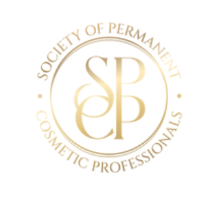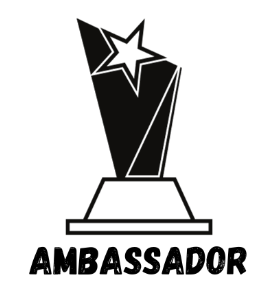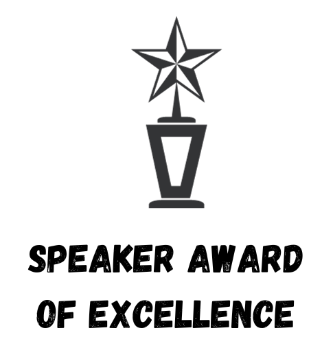
In marketing, we get the same magnetic push and pull found in magnetic polarity. Whether it’s teaching about polarity or singing a rap song about the push-pull of chemistry, the impact is the same. Energy attracting or pushing apart.
The coronavirus has made teachers incredibly creative. I recently saw a news story on them teaching magnetic polarity virtually.
Table of Contents
With the help of assistants, in this case, the teacher’s children, she placed two large magnets on a table with their horseshoe shapes aligned. The magnetic poles were aligned directly across from each other.
Then she handed her son and daughter each a magnet and had them hold them in the same position. “Now, try to slowly move the magnets directly toward each other,” she guided.
“That’s good, keep the ends pointing toward each other.”
A look of surprise crossed the little boy’s face as he encountered resistance from the magnet as he tried to move it toward his sister’s.
“Excellent, now pause a moment.” She stepped closer and shifted the magnets so the poles were no longer aligned and that one pole from her son’s magnet touched the opposite pole of his sister’s.
“Okay, now what happens when you try to pull apart.”
“It’s stuck!” The little boy said, then he put in some effort and jerked the magnet away from his sisters.
“I did it!” He grinned victoriously as he brandished the magnet in both hands.
“Yes, you did!”
“The resistance you felt was the magnetic polarity being attracted to its opposite force. When the magnets were perfectly aligned they repelled each other. When aligned to an opposite pole, it took your force to move them apart.”
In marketing outbound marketing is also known as push marketing. It takes your product out to where your prospects are to make it easy for them to find. The focus is on your brand or product.
On the opposite side, inbound marketing or pull marketing the focus is on relationships. It relies on prospects that are looking for your product.
Push creates demand by making them aware of your brand and the solutions it offers. Pull offers a way to fulfill that need.
The blend you need in your marketing efforts depends on where you, your brand, or a specific product are at a given moment. I’ve seen this over and over again with clients and former students I was mentoring.
All businesses need a mix of both as they grow and build.
For new businesses, you can’t start with pull marketing. First you need to help your “hungry crowd” find you have a solution. That means you need to get your product out there in front of them. You need to use the push.
Once you have created the demand, then you can use the pull to bring them to your website and guide them to their solution.
However, push and pull must be adapted to their times to be relevant and get on people’s radar. Some push techniques don’t work well in a pandemic.
Face-to-face meetings are going virtual. Showrooms are going virtual. Trade shows have one option - go virtual. These are all backbones of push marketing.
Pull has also gotten more challenging due to the sheer volume of companies now focused on online marketing.
In today’s environment, both push and pull need a client-centric focus. Start with your push and have your pull set up to provide the solution...the sales.
There are still some classical push - outbound marketing techniques that work. Things like billboards, television, radio, print, direct mail, and eye-catching packaging.
You can also use social media posts and paid ads.
The goal is to get your brand/product out there in front of people so they can learn about it.
I’ve seen clever use of YouTube infographics to create brand awareness.
Interestingly, local television stations are trying to boost local economies by getting the word out to help small businesses. If you’ve been wanting to try some television spots and have the capital, it might be a time to consider it.
The goal of push marketing is to get attention. It should be a disrupter. Something that interrupts the flow of the day. Something that makes people question, “what was that?”
Bingo, you got their attention.
So what are you going to do with that attention?
If you have their attention you need pull-marketing to move them from where they saw you to a place where they can learn more or make a purchase.
The consumer is seeking a product based on need. They saw you and want to know more.
Pull marketing uses your reputation, consumer interest, effective SEO, pay-per-click, blogs, content, and social media. It requires your brand to be in the right place at the right time.
For pull marketing to work effectively, it must be ready and in place at the moment you need it. You can’t wait to start building it out to when you now have traffic or you’ll be missing sales.
If you already have a good reputation and a known brand, your push marketing will probably shift to push-notifications.
These sort of blur the line between push and pull. They are designed to be used both on your website and via social media marketing to help guide the prospect to finding their answer.
These are designed to engage visitors both on and off your website and keep your product in front of them.
However, there is a catch. You must have their permission in order to send them.
At a time when daily emails have doubled or tripled, people are a bit more protective of giving out their email address. You’ll need to give them a good reason for doing so. It will need to be something of value.
Value might be bonus information. It could be, a guide, a discount, easier tracking for an order, or another type of reward. Whatever you chose it must resonate, be relevant to, and focused on your target customer.
With our changing business environment and more intensive competition, it’s a crucial time for businesses to evaluate how they are using push and pull marketing.
Need assistance with a quick look or more intensive updates? Message me: judith@jcpwellnesscopy.com.
 Judith Culp Pearson receives three top honors
Judith Culp Pearson receives three top honors
at the annual Society of Permanent Cosmetic Professionals in
Ft. Worth, Texas - October 7-9, 2023




